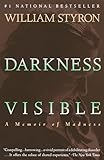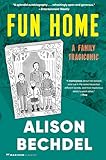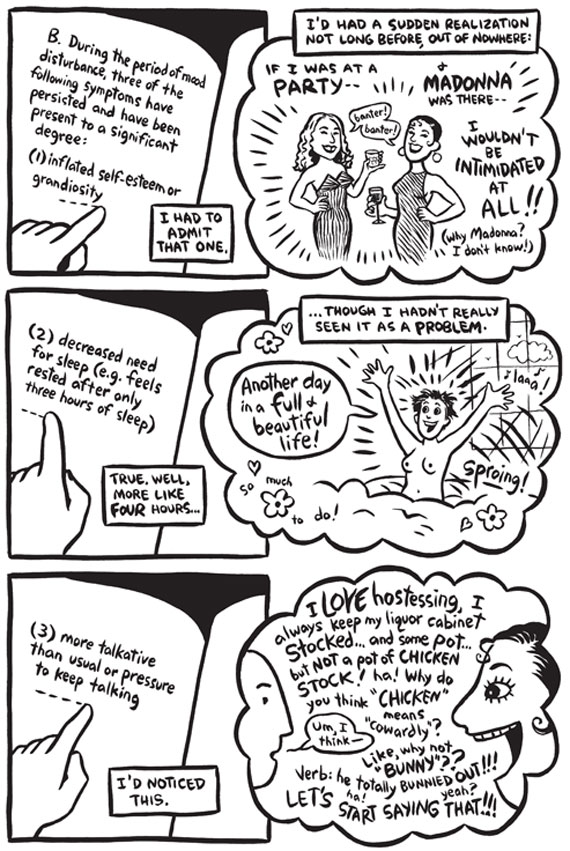 On a two-page spread in her graphic memoir Marbles, Ellen Forney copies a partial list of artists and writers with “probable manic-depressive illness or major depression,” from Francesco Bassano to Anders Zorn, Antonin Artaud to Walt Whitman, Hans Christian Andersen to Emile Zola. There are plenty of people afflicted with mental illness who also happen to lack any artistic inclinations, but still, given such lists, one wonders: Is there a relationship between mental illness and genius? Peter Kramer fought that romanticism in his 2005 book Against Depression. “Like tuberculosis in its day, depression is a form of vulnerability that even contains a measure of erotic appeal,” he wrote in an accompanying essay in The New York Times Magazine, but the evidence that depression led to higher powers of perception, he claimed, was weak.
On a two-page spread in her graphic memoir Marbles, Ellen Forney copies a partial list of artists and writers with “probable manic-depressive illness or major depression,” from Francesco Bassano to Anders Zorn, Antonin Artaud to Walt Whitman, Hans Christian Andersen to Emile Zola. There are plenty of people afflicted with mental illness who also happen to lack any artistic inclinations, but still, given such lists, one wonders: Is there a relationship between mental illness and genius? Peter Kramer fought that romanticism in his 2005 book Against Depression. “Like tuberculosis in its day, depression is a form of vulnerability that even contains a measure of erotic appeal,” he wrote in an accompanying essay in The New York Times Magazine, but the evidence that depression led to higher powers of perception, he claimed, was weak.
 Still, Forney’s own battle with manic depression was shadowed by this concern. She had come to Seattle when she was in her early 20s hoping to make it as a freelance comic artist. She wanted to be brilliant, filled with heat, and thought that her clinical diagnosis of Bipolar 1 admitted her to “Club Van Gogh.” And she feared the neutering effect of medication. (It reminds you a little of Lisa Simpson’s ambitions to become a jazz musician. “I’ll avoid the horrors of drug abuse, but I do plan to have several torrid love affairs, and I may or may not die young. I haven’t decided.”) Forney’s highs could be wonderful, but also destructive, and her depths were terrible. Her chronicle of her fight is personable and unpretentious. She has her own insights into her battle, but her voice is not battle-weary.
Still, Forney’s own battle with manic depression was shadowed by this concern. She had come to Seattle when she was in her early 20s hoping to make it as a freelance comic artist. She wanted to be brilliant, filled with heat, and thought that her clinical diagnosis of Bipolar 1 admitted her to “Club Van Gogh.” And she feared the neutering effect of medication. (It reminds you a little of Lisa Simpson’s ambitions to become a jazz musician. “I’ll avoid the horrors of drug abuse, but I do plan to have several torrid love affairs, and I may or may not die young. I haven’t decided.”) Forney’s highs could be wonderful, but also destructive, and her depths were terrible. Her chronicle of her fight is personable and unpretentious. She has her own insights into her battle, but her voice is not battle-weary.
We met for an interview in Seattle on May 31. She had recently returned from a trip to Sarajevo sponsored by the U.S. embassy where she discussed Sherman Alexie’s young adult novel The Absolutely True Diary of a Part-Time Indian, which she illustrated, with Bosnian high school students. That book won a National Book Award. Marbles has been nominated for an Eisner.
 The Millions: There’s a whole set of books, that are well-written and accessible, that a psychiatrist knows to give people to read. I imagine Marbles may become one of those books. What do you think Marbles as a graphic memoir can do that, for example, Darkness Visible can’t do?
The Millions: There’s a whole set of books, that are well-written and accessible, that a psychiatrist knows to give people to read. I imagine Marbles may become one of those books. What do you think Marbles as a graphic memoir can do that, for example, Darkness Visible can’t do?
Ellen Forney: I think that comics and the arts of painting and music offer a certain emotional quality, an emotional communication that a text doesn’t have. I’m not saying it’s better or worse. I’m saying it’s different. When the story is about mood or a set of moods, [then] having a picture, having a drawing style, having a visual representation of that…explains what [these different moods] feel like in a way that text just can’t. I also think that comics in general, for the most part, are approachable in a way that text isn’t.
TM: I always think of comics as a form of handwriting. When you get a letter that is handwritten, you have an idea of the body of the person who wrote that letter. Some of my favorite comics are a bit naïve, a bit rough, and appear unpolished even if they are carefully done. I think your comics appeal to that sensibility.
EF: It’s where my style naturally lands. The analogy that I make a lot when I look at someone’s very polished work [like] Dan Clowes or Charles Burns is a food analogy. Their work is like sushi. It’s so perfect, or if it is imperfect, it’s in a very perfect way. Whereas in my work, and I think we share that preference, is like lumpy oatmeal cookies that somebody baked. They have a very different appeal. It has an approachability. It has a different kind of emotional appeal. There’s a sense of conviction that’s different.
But I want to add one thing about handwriting. Without belaboring the point, I think it’s a travesty that so many cartoonists are turning to making a font out of their letters for exactly this reason. That feeling of a handwritten letter…Excuse me, I can’t remember how you put it.
TM: That you can imagine the body behind the hand doing the drawing.
EF: Right. And a sense of time in a way. When you see somebody’s handwriting, you know that there’s a span of time. There’s always that sense of feeling cheated when you compare all of the “a”s and they’re all the same. There’s something superficial about it. The letters don’t come together. I just feel that [handwriting] is far superior as far as storytelling [is concerned], as a method of communication in particular.
TM: When you are bipolar it’s very hard when you are in your depressive states to access the emotions of the high states and it’s also hard when you are in your high states to channel the emotions of your down states. I’m in a meditation group. One of the exercises we try to do is to access our unhappy emotions in order to see what they do to our bodies. And it’s very hard to do that on cue. And I imagine when you were composing your book it was very difficult to access these different states.
EF: I had a lot of material from that time specifically to draw from to jog my memory. I had years of journals. I don’t know how I would have done this without journals. The drawings I did in my journals I did when I was depressed. [I was also] talking with friends and people in my family about what I was like, which was extremely difficult, and just remembering, letting myself and making myself go there. It was really really difficult. It was a very thorough exposition of things that were anywhere from cringe worthy — a lot of the manic stuff was “ooh cringe” — to some extremely painful depressive stuff. And once you got there, you remember a lot more and it was really emotionally intense.
TM: When you were immersing yourself in those depressive states, were you afraid of accessing some memory that would trigger something in you that would return you to a place you couldn’t get back from?
EF: This is funny. Most people don’t ask me about this. [They’ll ask,] “Was it therapeutic for you?”
I felt like I was grounded. But I was extremely challenged. My psychiatrist was very much in touch with me, making sure I was staying steady. It was immersion therapy. I set up a tripod and posed for every panel. I was drawing myself crying and lying. I was so grateful towards the end that I wouldn’t have to keep setting [that up anymore]. I got a chair that looked like my psychiatrist’s chair. I realized I would have to be drawing that over and over. So I posed like my mother. I posed like my psychiatrist. And really, literally embodying these other characters, me and people who were around me, thoroughly immersing myself in that world and that time.
 TM: I think Alison Bechdel used the same strategy when she made Fun Home.
TM: I think Alison Bechdel used the same strategy when she made Fun Home.
EF: Yeah, she did. I think a lot of cartoonists use that. I think a lot of people think we draw out of our heads. And they think we’re not so good if we don’t draw out of our heads.
TM: This memoir is set at the time when you were writing I Was Seven in ’75 [a biographical strip about her childhood]. Do you see the symptoms of your bipolar disorder in the way I Was Seven in ’75 looks now?
EF: It was odd. I remember being manic and walking over to a table of people and asking them about what crossed pinkies meant for them. Does it mean if you say the same words at the same time or does it mean that you’re holding hands in a shy way? I was doing these spontaneous interviews.
TM: And you think that was a kind of mania.
EF: Not entirely. That’s in my personality even now. But I can remember there being an excitement and a heat behind it.
Some parts of the strip are really wordy — a lot of my work is really wordy — but it’s wordy in a way that I can recognize as being part of being revved. And I remember another point where I just did a lot of really literal drawings when I first got really depressed. At the end of a story about my dog there was just a drawing of me holding my dog. I think I even traced it from a photo. And I just couldn’t get very far thinking when I was in the depths. Yeah, in my first months when I was really depressed, that’s all I could really do. How I did that, I don’t actually know. Looking back, I don’t know how I managed to get this silly comic together.
 TM: When you get diagnosed with a disorder of any sort you fear that your personality can be reduced to a few lines in a handbook. And nobody likes that. We all think of ourselves as being more idiosyncratic and interesting. Do you fear that some of your political beliefs, some of your sexual energy as evidenced in your book Lust [a collection of illustrated erotic personal ads she did for The Stranger], some of your personality can be reduced to this mental disorder?
TM: When you get diagnosed with a disorder of any sort you fear that your personality can be reduced to a few lines in a handbook. And nobody likes that. We all think of ourselves as being more idiosyncratic and interesting. Do you fear that some of your political beliefs, some of your sexual energy as evidenced in your book Lust [a collection of illustrated erotic personal ads she did for The Stranger], some of your personality can be reduced to this mental disorder?
EF: One of my fears for years in telling people that I was bipolar or coming out [as bipolar] when Marbles came out was that people that I knew or people I would meet would second-guess everything that I did, wondering if it was because I was bipolar. For myself, it’s impossible to distinguish between these different aspects. I know the things that I do that could be considered manic-y, or in the case of Lust, hyper-sexual by some. But I think [those things are] all a healthy part of me, my personality.
At the same time, I think that a lot of people will think of a mental disorder as being something other than themselves. Well, let’s see, not even mental disorders, but say, for example, someone was drunk. “That wasn’t me, that was the liquor talking or that was any sort of substance talking or that was the depressed me.” I think that it’s understandable [to say that]. But we also have to acknowledge that that’s part of us. That person who acted out when you were drunk…That was you. I don’t want to give anyone advice on their own identity, but I think it’s an important thing to think about.
That person who won the marathon. You’re not like that all the time. The person who fell off the curb. Well, of course you’re not like that all the time. But that was you and that was you.
TM: There’s a note of fear at the end of your book, that you’re managing what you have and you’re hoping that it stays managed, but you don’t know where it’s going to go. Do you feel if you were to relapse you would be responsible for writing a sequel?
EF: I wouldn’t have to tell any stories that I don’t want to tell. I didn’t feel that I had any responsibility to tell anything.
I mean I would do a [a story about a] relapse if it were a good story. I don’t know if that would be that interesting a story. I don’t know if that would be that interesting a sequel.
I’m looking forward to moving on.
Special thanks to Eric Reynolds of Fantagraphics for assisting in this interview’s preparation.
All images excerpted from MARBLES by Ellen Forney. Copyright (c) 2012 by Ellen Forney. Reprinted by arrangement with Gotham Books, a member of Penguin Group (USA), Inc.












